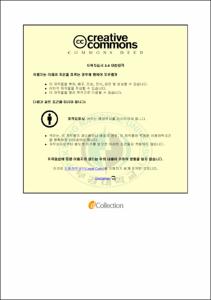마산만에서 부유성 섬모류의 시·공간적 분포
- Alternative Title
- Temporal and Spatial Distribution of Planktonic Ciliates in Masan Bay
- Abstract
- 마산만에서 2004년 4월부터 2006년 2월까지 부유성 섬모류의 시·공간적 분포를 파악하기 위하여 계절별로 섬모류를 비롯한 생물학적요인과 물리화학적 요인을 파악하였다. 부유성 섬모류는 세그룹(소모류, 유종섬모류, 광합성 섬모류인 Mesodinium rubrum)으로 구분하여 분석되었으며 종동정은 피각을 지닌 유종섬모류에 한해서 실시되어 총 7속 20종(미동정 종 제외)이 관찰되었다. 유종섬모류의 우점종으로는 Eutintinnus tubulosus, Favella taraikanesis, Helicostomella longa, Helicostomella subulata, Tintinnopsis tubulosoides 그리고 Amphorellopsis sp.이 출현하였다. 총 부유성 섬모류는 평균 3.44×10^(3) cells L^(-1)의 출현량 (탄소량 8.53 ㎍C L^(-1))을 보였으며 전반적으로 내측 정점에서 높은 출현량을 보였고 외측정점에서 낮은 출현량을 보였다. 그룹별로는 유종섬모류의 경우 총 섬모류 출현량의 평균 38.6 % (탄소량 66.4 %)를 차지하였고 소모류는 출현량의 34.0 % (탄소량 22.7 %)를 차지하였다. 광합성 섬모류인 Mesodinium rubrum은 출현량의 평균 27.3 % (탄소량 11.0 %)를 차지하였다.
부유성 섬모류는 물리, 화학적인 요인과는 뚜렷한 상관성을 볼 수 없었으나 생물학적 요인 중 식물플랑크톤과 자가영양 미소편모류와 높은 또는 낮은 양의 또는 음의 상관성을 보였다. 또한 Mesodinium rubrum은 종속영양 미소편모류를 제외한 나머지 먹이생물(식물플랑크톤, 자가영양 미소편모류, 종속영양 박테리아)과 매우 뚜렷한 상관성을 보였다. 또한 부유성 섬모류의 출현량이 증가하는 시기에 후생동물플랑크톤의 개체수는 낮아지는 현상을 보여 음의 상관성을 보이는 것으로 판단된다. 부유성 섬모류의 먹이생물에 미치는 포식압을 구한 결과 박테리아 평균 1.37 % d^(-1), 미소편모류 50.6 % d^(-1) 그리고 식물플랑크톤 31.5 % d^(-1)으로 나타났다. 따라서 부유성 섬모류가 먹이생물들에게 미치는 영향은 조사시기와 정점에 따라 다른 것으로 판단된다. 본 연구 결과, 마산만에서 부유성 섬모류 생물량의 시·공간적 분포는 물리화학적 요인보다는 먹이생물에 의해 더 영향을 받는 것으로 사료된다.
In order to understand the temporal and spatial distribution of planktonic ciliates, this study was carried out in Masan Bay from April 2004 to Feburary 2006 and several abiotic and biotic factors were measured. For this study, planktonic ciliates were divided into three groups; tintinnds, oligotrichs and Mesodinium rubrum. 7 genera and 20 species (excepted unknown species) of tintinnids were encounterd, and the dominant species of tintinnids were Eutintinnus tubulosus, Favella taraikanesis, Helicostomella longa, Helicostomella subulata, Tintinnopsis tubulosoides and Amphorellopsis sp. Total planktonic ciliate abundance and carbon biomass were means of 3.44×10^(3) cells L^(-1) and 8.53 ㎍C L^(-1), respectively, and the abundance and carbon biomass were higher in the inner stations than in the outer stations. The ciliate abundances in the inner stations were mostly occupied with M. rubrum, and in the middle and outer stations occupied with oligotrich and tintinnid, respectively. The mean contributions of tintinnids, oligitrichs and Mesodinium rubrum to the total ciliate abundance (carbon biomass) were 38.6% (66.4%), 34.0% (22.7%) and 27.3% (11.0%), respectively.
Planktonic ciliates were not correlated with physical and chemical factors, but were positively correlated with phytoplankton and autotrophic nanoflagellate. Additionally, M. rubrum was correlated with biological factors except heterotrophic nanoflagellate (HNF). while planktonic ciliates increased in abundance, zooplankton decreased from April to July 2004. The means of the estimated grazing impact by planktonic ciliates on bacteria, nanoflagellates and phytoplankton were 1.37 % d^(-1), 50.6 % d^(-1) and 31.5 % d^(-1). This study suggests that in Masan Bay the prey abundance to be a potentially important factor for determining the abundance and distribution of plaktonic ciliates, and that their importance might vary seasonally and among the sites.
- Issued Date
- 2009
- Awarded Date
- 2009. 8
- Type
- Dissertation
- Publisher
- 부경대학교 대학원
- Alternative Author(s)
- Lee, Jae-Do
- Affiliation
- 부경대학교 대학원
- Department
- 대학원 해양학과
- Advisor
- 문창호
- Table Of Contents
- Ⅰ. 서론 = 1
Ⅱ. 재료 및 방법 = 3
1. 연구 해역 및 조사 정점 = 3
2. 물리·화학적 환경 요인 = 8
3. 생물학적 요인 = 8
가. 엽록소-a = 8
나. 부유성 섬모류의 출현량 및 탄소량 = 9
4. 통계분석 = 10
가. 종 다양성 지수 = 10
나. 상관분석 = 10
Ⅲ. 결과 및 토의 = 11
1. 물리·화학적 환경 요인 = 11
가. 수온 = 11
나. 염분 = 13
다. 용존산소 = 16
2. 생물학적 요인 = 18
가. 엽록소-a = 18
나. 부유성 섬모류의 출현량 = 26
다. 분류군별 출현량 = 34
(1) 유종섬모류(Tintinnids) = 34
(2) 소모류(Oligotrichs) = 48
(3) Mesodinium rubrum = 59
3. 부유성 섬모류의 환경 및 생물요인과의 연관성 = 61
가. 물리·화학적 요인과의 상관관계 = 62
나. 생물학적 요인과의 상관관계 = 71
(1) 엽록소-a = 71
(2) 먹이생물 군집과의 관계 = 77
(3) 상위포식자와 부유성 섬모류와의 관계 = 78
다. 미세생물먹이망에서 부유성 섬모류의 역할 = 81
Ⅳ. 결론 = 85
국문요약 = 87
참고문헌 = 89
감사의 글 = 100
Appendix = 101
- Degree
- Master
- Files in This Item:
-
-
Download
 마산만에서 부유성 섬모류의 시·공간적 분포.pdf
기타 데이터 / 3.73 MB / Adobe PDF
마산만에서 부유성 섬모류의 시·공간적 분포.pdf
기타 데이터 / 3.73 MB / Adobe PDF
-
Items in Repository are protected by copyright, with all rights reserved, unless otherwise indicated.